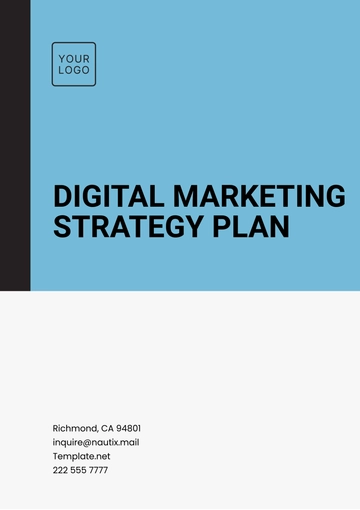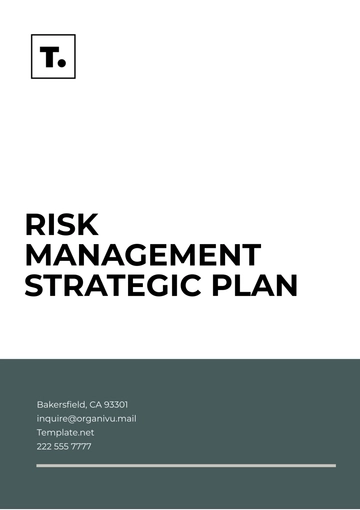Free Startup Strategic Planning Guide

A successful business journey begins with a clear vision and a well-crafted strategy. Transitioning from a mere concept to a flourishing enterprise demands meticulous planning and the execution of well-thought-out strategies. In this comprehensive guide, we embark on a journey to unravel the intricacies of strategic planning tailored specifically for startups.
1. Introduction to Strategic Planning
Strategic planning serves as the cornerstone of business success, guiding entrepreneurs in defining their business direction and effectively allocating resources to achieve their goals. It involves a systematic approach to decision-making, encompassing vital elements such as capital investment, talent acquisition, and market positioning. A robust strategic plan not only delineates the path to success but also acts as a blueprint for sustainable growth and scalability.
2. Getting Started: Key Steps in Startup Strategic Planning
Identifying the Purpose of Your Startup
The journey towards strategic planning commences with a deep introspection into the core purpose of your startup. What fundamental problem does your venture seek to address? Is there a specific market gap that your product or service aims to fill? By elucidating the purpose of your startup, you lay the groundwork for crafting a compelling mission statement and aligning your strategic objectives with overarching goals.
Determining Your Target Audience
Understanding your target audience is pivotal in shaping your strategic approach. Who are your ideal customers? What are their demographics, preferences, and pain points? Conducting thorough market research and leveraging data analytics can provide valuable insights into consumer behavior, enabling you to tailor your products or services to meet their needs effectively.
Analyzing the Market and the Competition
In today's dynamic business landscape, a thorough analysis of the market and competitive landscape is indispensable. By gaining a comprehensive understanding of market trends, consumer preferences, and competitive positioning, you can identify opportunities for differentiation and capitalize on emerging market dynamics. Conducting a SWOT (Strengths, Weaknesses, Opportunities, Threats) analysis can aid in identifying potential areas of competitive advantage and mitigating risks.
Defining Your Unique Selling Point
Amidst a sea of competitors, carving out a distinct identity for your startup is imperative for success. What sets your product or service apart from others in the market? Your unique selling point (USP) encapsulates the value proposition that resonates with your target audience and distinguishes your brand from competitors. Whether it's innovative technology, unparalleled quality, or exceptional customer service, your USP forms the bedrock of your strategic positioning strategy.
By meticulously navigating through these initial steps, startups can lay a solid foundation for strategic planning, setting the stage for informed decision-making and sustainable growth. However, the journey towards strategic success doesn't end here. In the subsequent sections of this guide, we delve deeper into the intricacies of strategic planning, offering actionable insights and practical guidelines to propel your startup towards long-term success.
Step-by-Step Instruction
In strategic planning, the initial groundwork serves as a springboard for delving into the heart of strategic execution. Once the foundational elements are in place, startups embark on a journey of step-by-step instruction, meticulously crafting a roadmap that leads them towards their desired destination of success.
Set Clear, Measurable Objectives:
At the helm of strategic planning lies the pivotal task of setting clear, measurable objectives that serve as guiding beacons for the organization. What milestones do you aim to achieve within a specified timeline? Whether it's revenue targets, market share expansion, or product development milestones, defining precise objectives provides a sense of direction and clarity of purpose. By establishing measurable key performance indicators (KPIs), startups can gauge their progress and pivot their strategies accordingly, ensuring alignment with overarching goals.
Develop a Business Model:
Central to the strategic framework of any startup is the development of a robust business model that delineates how value is created, delivered, and captured. What is your value proposition, and how do you intend to monetize it? By elucidating the core components of your business model, including revenue streams, cost structure, and customer acquisition channels, startups can align their operational activities with long-term profitability and sustainability. Whether it's a subscription-based model, a freemium approach, or a pay-per-use model, crafting a viable business model lays the groundwork for sustainable growth and scalability.
Design a Marketing Plan:
In the competitive arena of business, effective marketing serves as a catalyst for attracting and retaining customers. A well-defined marketing plan outlines how startups will reach their target audience and persuade them to buy their products or services. Who are your target customers, and what channels resonate with them? By conducting market segmentation and leveraging data-driven insights, startups can tailor their marketing strategies to address the unique needs and preferences of their target audience. Whether it's digital marketing, content marketing, or influencer partnerships, designing a comprehensive marketing plan enhances brand visibility, drives customer engagement, and fosters brand loyalty.
Create a Financial Plan:
Sound financial management lies at the crux of strategic planning, ensuring that startups navigate the complexities of financial dynamics with prudence and foresight. By outlining how the business will manage its financials, including budgets, profits, and cash flow, startups can maintain financial viability and capitalize on growth opportunities. What are your revenue projections, and how will you allocate financial resources to support operational activities? By developing a comprehensive financial plan, startups can mitigate financial risks, optimize resource allocation, and lay the groundwork for long-term financial sustainability.
Prepare a Risk Management Plan:
In the unpredictable terrain of business, identifying and mitigating risks is essential for safeguarding against potential setbacks and disruptions. A robust risk management plan entails identifying potential risks, assessing their impact, and devising strategies to mitigate them effectively. What are the potential risks facing your startup, and how will you proactively address them? Whether it's market volatility, regulatory changes, or cybersecurity threats, preparing a comprehensive risk management plan empowers startups to navigate uncertainties with resilience and agility.
By meticulously following these step-by-step instructions, startups can navigate the complexities of strategic planning with confidence and precision, laying a solid foundation for sustainable growth and long-term success.
Troubleshooting and FAQs
As startups engage in strategic planning, encountering obstacles and uncertainties along the way is inevitable. In navigating these challenges, having a troubleshooting framework and addressing frequently asked questions (FAQs) can provide invaluable guidance and insights. Here, we delve into common troubleshooting scenarios and offer practical solutions to overcome them:
What if our targets are not being met?
Despite meticulous planning and execution, it's not uncommon for startups to fall short of their predefined targets. When faced with this scenario, it's essential to adopt a proactive approach to identify underlying issues and recalibrate strategies accordingly.
First and foremost, revisit your strategic plan with a critical eye, scrutinizing each component to identify potential areas of improvement. Assess whether your objectives are realistic and aligned with market dynamics. If necessary, recalibrate your targets to ensure they are achievable within the given timeframe.
Next, delve into the root causes of underperformance by analyzing key performance indicators (KPIs) and performance metrics. Are there any bottlenecks or inefficiencies in your operational processes? By conducting a thorough diagnosis, startups can pinpoint areas requiring optimization and implement corrective measures accordingly.
Furthermore, leverage feedback loops and stakeholder insights to gain a deeper understanding of customer preferences and market dynamics. Solicit feedback from customers, partners, and internal stakeholders to identify pain points and areas for enhancement.
Ultimately, agility and adaptability are paramount in addressing performance gaps. Embrace a culture of continuous improvement, where iterative adjustments and experimentation are embraced to drive progress and innovation.
Our marketing efforts are not bringing expected results. What should we do?
In today's hypercompetitive landscape, achieving tangible results from marketing efforts can be challenging. When faced with lackluster marketing performance, startups must adopt a strategic approach to diagnose underlying issues and pivot their strategies accordingly.
First and foremost, assess the effectiveness of your current marketing strategies and tactics. Are your messaging and positioning resonating with your target audience? Evaluate the performance of various marketing channels and campaigns to identify high-performing avenues and areas requiring optimization.
Consider conducting A/B testing and experimentation to refine your messaging and optimize conversion rates. Test different marketing channels, messaging strategies, and creative assets to identify the most effective approaches for engaging your target audience.
Additionally, revisit your target audience segmentation and persona profiles to ensure alignment with market dynamics and evolving consumer preferences. Are there emerging market segments or niche audiences that warrant attention? By refining your target audience strategy, startups can tailor their marketing efforts to address specific customer needs and preferences.
Furthermore, explore opportunities for strategic partnerships and collaborations to amplify your marketing reach and leverage complementary strengths. Whether it's influencer partnerships, co-marketing initiatives, or strategic alliances, partnerships can enhance brand visibility and drive customer acquisition.
Ultimately, perseverance and agility are essential in navigating marketing challenges. Embrace a data-driven approach, where performance metrics and analytics inform strategic decision-making and iterative optimization.
How to tackle unforeseen risks?
In the volatile landscape of business, unforeseen risks and disruptions are inevitable. Whether it's market volatility, regulatory changes, or unforeseen events, startups must adopt a proactive approach to identify, assess, and mitigate risks effectively.
First and foremost, startups must establish a robust risk management framework that encompasses identification, assessment, mitigation, and monitoring of risks. Conduct a comprehensive risk assessment to identify potential threats and vulnerabilities across various facets of your business operations.
Once risks are identified, prioritize them based on their impact and likelihood, focusing on high-priority risks that pose the greatest threat to your startup's objectives and viability. Develop contingency plans and mitigation strategies to address identified risks, incorporating risk mitigation measures into your strategic planning and operational processes.
Furthermore, embrace a culture of risk awareness and resilience, where employees are empowered to identify and escalate potential risks proactively. Implement regular risk assessments and scenario planning exercises to anticipate and prepare for potential contingencies.
Additionally, leverage insurance and risk transfer mechanisms to mitigate financial exposure and protect against unforeseen liabilities. Explore options such as business interruption insurance, liability insurance, and cyber insurance to safeguard your startup against potential risks and liabilities.
Ultimately, risk management is a dynamic and iterative process that requires ongoing vigilance and adaptation. By adopting a proactive approach to risk management, startups can navigate uncertainties with resilience and agility, ensuring continuity and sustainability in the face of unforeseen challenges.
In summary, addressing troubleshooting scenarios and FAQs is essential for startups navigating the complexities of strategic planning. By adopting a proactive and strategic approach to troubleshooting, startups can overcome obstacles, drive continuous improvement, and ultimately achieve long-term success.
Conclusion
In entrepreneurship, strategic planning serves as the cornerstone of success, guiding startups on their journey from inception to sustainable growth. As we conclude this comprehensive guide, it's imperative to underscore the importance of viewing strategic planning not as a one-time event, but rather as an ongoing process of refinement and evolution.
Strategic planning is akin to charting a course through uncharted waters, where adaptability and resilience are paramount. While the roadmap laid out in this guide offers a structured framework for strategic decision-making, it's essential to recognize that circumstances will evolve, markets will fluctuate, and unforeseen challenges will arise. As such, startups must remain agile and responsive, continuously reassessing their strategies and adapting to changing dynamics.
A fundamental tenet of strategic planning is maintaining clarity of purpose amidst ambiguity and uncertainty. As startups navigate through myriad challenges and opportunities, it's crucial to keep their overarching mission and vision in clear sight. By anchoring strategic decisions to the core purpose of the startup, entrepreneurs can ensure alignment with long-term objectives and stay focused on the bigger picture.
Staying informed about market trends, consumer preferences, and competitive dynamics is essential for strategic agility and responsiveness. In today's fast-paced business environment, knowledge is power. By staying abreast of emerging trends, disruptive technologies, and shifting consumer behaviors, startups can identify opportunities for innovation and capitalize on market opportunities proactively.
While flexibility in tactics is essential for adapting to changing circumstances, consistency in strategic intent is equally crucial. Startups must remain steadfast in their commitment to their core values, vision, and strategic objectives. While the means of achieving these objectives may evolve, the underlying strategic intent should remain unwavering.
Failures are an inevitable part of the entrepreneurial journey, but they also present invaluable learning opportunities. Instead of being discouraged by setbacks, startups should embrace failures as stepping stones to growth and innovation. By adopting a growth mindset and learning from past mistakes, entrepreneurs can iterate and refine their strategies, ultimately emerging stronger and more resilient.
In conclusion, strategic planning is a dynamic and iterative process that requires ongoing adaptation, resilience, and learning. By following the roadmap outlined in this guide and embracing the principles of adaptability, clarity of purpose, market awareness, and resilience, startups can lay a firm foundation for long-term success and thrive amidst uncertainty and change. As you embark on your entrepreneurial journey, remember to stay true to your vision, stay informed, stay flexible, and above all, stay resilient. Success may not come overnight, but with strategic planning and perseverance, it is well within reach.
- 100% Customizable, free editor
- Access 1 Million+ Templates, photo’s & graphics
- Download or share as a template
- Click and replace photos, graphics, text, backgrounds
- Resize, crop, AI write & more
- Access advanced editor
Unlock your startup's potential with Template.net's Startup Strategic Planning Guide Template. Our editable and customizable template, powered by cutting-edge AI editor tool, empowers you to craft a tailored roadmap for success. Streamline your strategic planning process, set clear objectives, and chart a course towards growth and profitability. Get started today and steer your startup towards greatness!





























